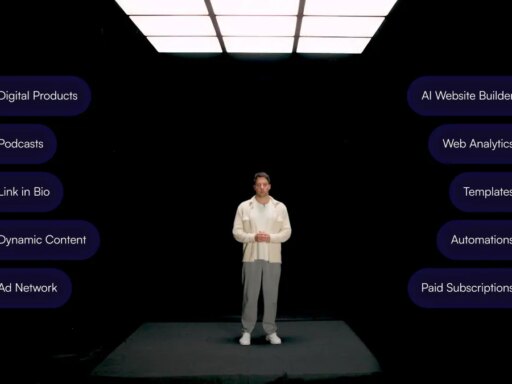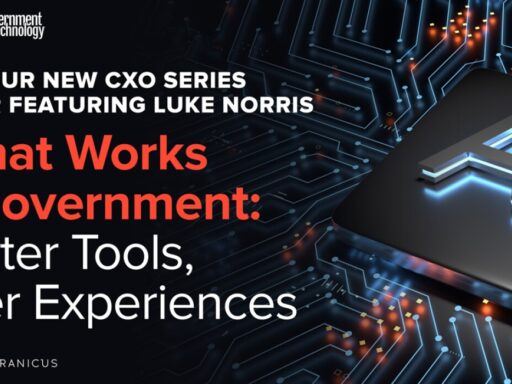Marketing strategies depend on great design and stunning visuals to be successful. However, developing that content can be resource-intensive. More than 20% of businesses surveyed said that the time it takes to get a design completed is their biggest pain point.
Artificial intelligence (AI) can help optimize the design process and create better graphics — and even generate photos — faster than it takes to find and hire a design team or freelancer. And if you already have a designer on staff, AI can help that person create custom color palettes, edit photos, and develop graphics faster. Try these AI tools to improve your design process and generate attention-grabbing images for your business.
Adobe Firefly
Adobe Firefly provides AI for graphic designers to create images, transform text, and play with color using simple text prompts. Firefly not only generates images, but it can also create video, audio, and vector graphics. It also translates an image to a video, and any asset the AI serves is commercially “safe,” meaning Firefly’s AI model is trained on content Adobe has permission to use.
Firefly is now available both as a standalone product and embedded in other Adobe products, like Photoshop and Express. For instance, in Photoshop, designers can use Firefly’s Generative Fill command to add, extend, or remove content from any image. Like most Adobe products, basic versions of Firefly are user-friendly and easy to pick up. More advanced designers will also appreciate the tool’s versatility and detailed features.
[Read more: What AI Can’t Do for Your Small Business]
Uizard
If Adobe Firefly is for design professionals, Uizard is at the other end of the spectrum — AI for those with no design experience. However, Uizard focuses less on marketing and more on product design. It can help you translate a sketch on the back of a napkin into a presentation-ready product mock-up. Uizard is a great resource for startups seeking to create a landing page, app, wireframe, or any other user interface/user experience. If you’re looking to do creative work (e.g., a logo, an image for social media, or infographic), this is not the right tool.
Midjourney
You may have heard of Midjourney in the media, as this AI image generator has made waves for its ability to produce realistic images from almost any prompt. Midjourney originally launched on Discord, meaning users had to create a Discord account to use the tool. As of 2024, Midjourney also offers a dedicated web interface, allowing users to generate and edit images directly through their website, with features like panning, zooming, and region-specific editing. However, some features are only available on the Discord version.
Once you’re signed in, the Midjourney bot will use your text prompts to create images and graphics for personal and professional use. Some images look hyperreal, while others can be slightly chaotic — it could take a few tries to get the images you need to look perfect.
Khroma
Khroma deploys AI to help users find color palettes for their next design project. “By choosing a set of colors, you’ll train a neural network-powered algorithm to generate colors you like and block ones you don’t, right in your browser,” explained Khroma.
To get started, the tool will ask you to choose 50 colors with different saturations, hues, and values. Along the way, the tool will prompt you to pick a variety to give it enough training data. Then Khroma’s AI will create a series of color combinations for you, all for free. It’s perfect for businesses that are branding (or rebranding) or looking for inspiration.
[Read more: 4 Effective Ways Small Businesses Can Leverage AI]
AutoDraw
Google’s AutoDraw uses AI to turn your doodles into refined illustrations. This free tool starts with a blank page on which you can use your mouse to create a rough sketch. The AI deciphers what you’re trying to create and turns it into a graphic image. For instance, a stick figure can be turned into a person playing basketball or practicing yoga. From there, you can use basic tools to color, shade, and refine the image with text. This could be a good platform for generating a logo or icons for a presentation.
Topaz Photo AI
Photography hobbyists and businesses alike can get a lot out of Topaz Photo AI. This app uses AI to remove noise, correct an image’s focus, and increase the pixel count so you can enlarge images without losing clarity. It saves having to buy fancy camera equipment and can help you create sharp, professional-looking images from those you already have saved in your library. This app is one of the pricier AI tools on this list, yet it is affordable compared to the cost of having a professional photographer take or edit your images.
The “right” AI tool for your business is one that’s easy to learn, affordable, and helps you achieve the professional-looking visual assets you need.
Framer
Framer is a website builder and prototyping tool designed to help users create interactive, high-performing websites and web applications without needing to write code. Framer includes AI-powered tools that can generate websites from plain text prompts, translating your request into code. Once you have a design you like, you can publish your site directly to the web. Framer offers both free and paid plans.
Pebbley
Pebbley is an excellent resource for AI-enhanced product photos. If you need to create more professional-looking product photos for an e-commerce site or for social media, Pebbley can remove/replace backgrounds, resize photos, remove objects in the frame, reposition the product, or add your logo to the image. It also includes a bulk editing feature that generates product photos with similar or varied backgrounds for up to 25 products. Pebbley is designed to be a user-friendly alternative to Photoshop; you can edit up to 40 images for free.
AI graphics vs. traditional design: pros and cons
AI tools are just that: tools. They perform a specific function, such as cleaning up an image, mocking up a prototype, or helping you find a color palette. When you have simple tasks that are time-intensive for the average person but simple for a designer, an AI tool can help you save money.
However, AI graphics can’t compete with the skill, vision, and creativity of a designer. For truly original work, you should hire a traditional designer. “Unlike AI, which relies on existing data and patterns, human designers can craft unique visuals tailored to a brand’s personality and goals,” wrote Markiserv, a design firm. “For instance, designing a wedding invitation might require an intricate understanding of the couple’s story, something AI would struggle to grasp.”
Traditional human designers may be more expensive, but they’ll bring to the table a level of nuance and the ability to grasp abstract concepts that AI can’t replicate.
When your project is straightforward and simple, an AI tool is a great solution. Bigger projects, like creating a brand identity or coming up with project packaging, should be delegated to a traditional design team.
How to choose the right AI design tool for your business
The “right” AI tool for your business is one that’s easy to learn, affordable, and helps you achieve the professional-looking visual assets you need. Beyond those factors, you’ll also want to think about how you work creatively and any ethical considerations you have about using AI versus hiring a designer.
Many AI tools, including ones on this list, offer a free trial. Take advantage of those options to see if each tool is intuitive. Approach each trial with a specific task or goal in mind, such as creating a logo, formatting an image for your social media channels, or generating a banner ad.
As you test your options, consider whether the AI is truly helpful or more time-consuming. As the product tester at HubSpot noted, “I tried to understand whether the tools’ AI elements were overhyped or genuinely helpful.” Some image generators, for instance, end up creating images with too many arms or wavy backgrounds that can be hard to fix.
Finally, think about the ethics and liability risks of using AI-generated images. Make sure any assets your AI tool generates are cleared for commercial use. Research how each platform trains its models to make sure no human creators are taken advantage of as the AI machine learns.
CO— aims to bring you inspiration from leading respected experts. However, before making any business decision, you should consult a professional who can advise you based on your individual situation.
CO—is committed to helping you start, run and grow your small business. Learn more about the benefits of small business membership in the U.S. Chamber of Commerce, here.
Published







